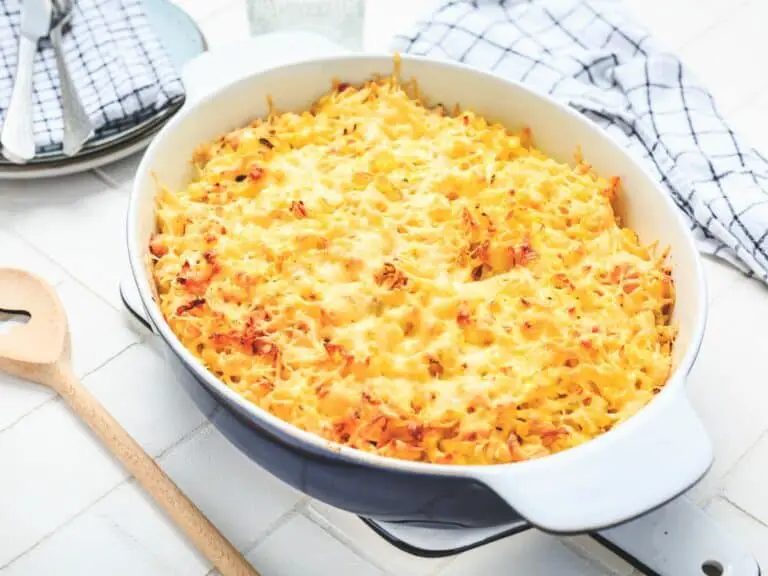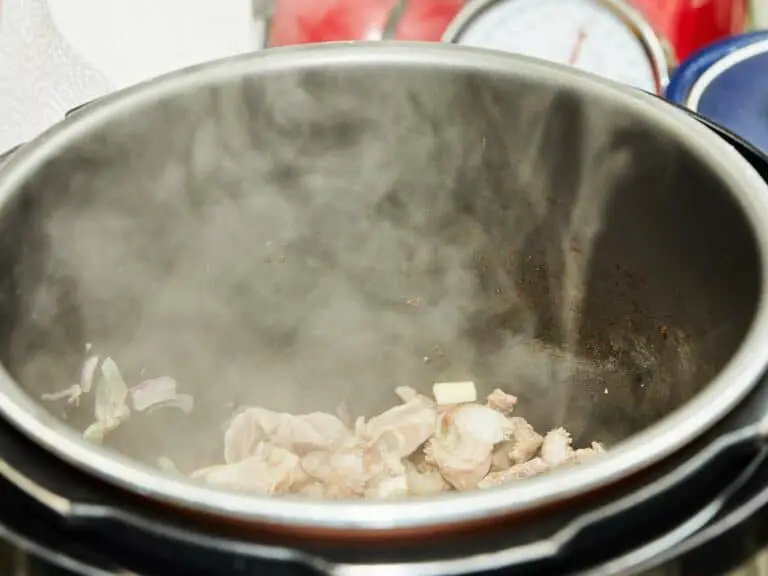Difference Between Pasta and Spaghetti [Complete Guide!]

Pasta is one of Italy’s greatest exports apart from Pizza and is widely popular.
I love Pasta – a simple flour and water combination that can be mixed with any number of meats and vegetables from stocks to broths; make it with your favorite cheese or simply tomato based. A world left to your creativity and imagination.
The truth is, as much as we love our Pasta, little do many people know about the widely popular pasta savored worldwide – Spaghetti. With so much confusion over Pasta and Spaghetti and is former the latter or vice versa.
The key difference between spaghetti and pasta is that all spaghetti is pasta, but not all pasta is spaghetti. Pasta dough can be formed into various shapes and sizes, such as penne, ravioli, macaroni, etc. When pasta dough is made into thin, long, and cylindrical-shaped strands, it is known as spaghetti.
Although that is a key difference, there are a few other nuances between pasta and spaghetti. So, in this article, we shall understand the two in further detail, so you never get confused in the future!
Is Spaghetti a Pasta?

Simply put, Spaghetti is Pasta. The name Spaghetti refers to the shape of Pasta, which is thin, long, and cylindrical stands. Pasta is a generic term used for dough made out of flour, water, and salt. Pasta may or may not contain eggs. The flour used in Pasta is specially made of a variety of wheat called durum wheat.
This dough is then formed into a variety of shapes such as Farfalle (Ribbon shaped), Conchiglie(Conch shaped), Fusilli(Twisted shaped), Rigatoni(pipe-shaped), Penne(cylindrical shaped), Fettucini(Ribbon shaped). That said, there are about 350 shapes of Pasta and many more names, some varying according to the region in Italy.
Many historians believe that Pasta was brought back to Italy by Marco Polo on his voyage to China. Originally made from rice flour, Italians used wheat flour simply because of its availability. Also, the use of wheat allowed them to make many other shapes we see today.
Few Differences Between Spaghetti and Pasta
While spaghetti is quite similar to typical pasta that we know of, there are a few differences that we should know. Let’s take a look at a few more differences between pasta and spaghetti –
| Sr. No. | Pasta | Spaghetti |
| 1 | Can refer to any shape of Pasta | Specific to the long thread-like strands of Pasta |
| 2 | It can be made of any flour mixed with or without eggs | It is made from durum wheat flour only |
| 3 | Any Pasta which does not have a twine-like shape isn’t called Spaghetti. It can change depending on shape and size, length and width, and is named according to the shape it looks like. | There are different types of Spaghetti depending on their thickness, but to qualify as Spaghetti, they have to have a long thread or twine-like shape. |
| 4. | Cooking time varies on the shape and size. | Cooking Time is uniform as it has a uniform length and thickness. |
Nutritive Value of Pasta vs. Spaghetti:
According to foodstuct.com, experiments on the nutritive value of Spaghetti compared to Pasta have resulted in
- Spaghetti has less Vitamin B1, Folate, Vitamin B2, Iron, and Vitamin B12.
- Pasta covers your daily Vitamin B1 needs 16% more than Spaghetti.
- In overall comparison, Spaghetti is lower in Sodium, Cholesterol.
- However, it is equal in the number of minerals and vitamins.
Is Spaghetti junk food?
Essentially Spaghetti can’t be labeled as junk food if you have enough amount of meat or vegetables in it. But, the main reason why people are tempted to refer to it as junk food is that it is filled with carbohydrates. Also, adding various creams and cheese to the sauce can make it loaded with calories.
Apart from being high in carbohydrates, Pasta is also rich in gluten which can cause allergies or issues for people who may not be able to tolerate gluten. Some brands like bionaturae offer gluten-free Spaghetti Pasta.
Also, today there are many plant-based Spaghetti made from chickpeas, mung beans, and lentils which are higher in vitamins, minerals, protein, and fiber and has a host of health benefits. Chickapea Organic is one such brand offering organic chickpea spaghetti pasta.
What are the Benefits of Eating Spaghetti?
Spaghetti contains fiber, protein, minerals, and vitamins, and its lower sodium and cholesterol content.
Whole wheat Spaghetti available in the market today has more fiber than your regular Spaghetti. Considering most Americans today don’t get enough fiber from their food compared to the daily recommended amount. Thus, it can be a healthier option compared to your regular Spaghetti.
However, it has gluten therefore, people having gluten allergies must avoid it.
What are the Different Kinds of Spaghetti?
Spaghetti originated from the Italian word “spago” which in Italian means “little twine” or “thread”.
These widely consumed shapes of Pasta also have a few variations mainly depending on the thickness of the Pasta compared to Spaghetti, such as Spaghettini(thinner), Spaghettoni(thicker), Angel’s hair (thinnest), Capellini(very thin). Bucatini(like Spaghetti but hollow), Bigoli (wholewheat spaghetti), Chitarra(meaning guitar cut using the harp-like tool).
Why is Spaghetti the Most Popular Pasta?

Spaghetti is a far more popular shape of Pasta in the United States for a Pasta recipe. The other popular is macaroni. It is popular simply because it has been there longer than any other Pasta and is widely available.
Early Italian immigrants brought with them a dry variety of pasta that was familiar to them and canned tomatoes which could be stocked on shelves easily.
The lack of many Italian ingredients and the availability of meat gave rise to the famous American dish Spaghetti with meatballs.
![Hamburger V/s Burger [What’s the Difference?]](https://myhousehacks.com/wp-content/uploads/2023/06/ezgif.com-gif-maker-2023-06-17T162436.013-768x432.jpg)

![How Long Do Hamburger Buns Last? [All You Need To Know!]](https://myhousehacks.com/wp-content/uploads/2023/09/ezgif.com-gif-maker-768x576.jpg)
![Difference Between Noodles and Spaghetti [Is There Any?]](https://myhousehacks.com/wp-content/uploads/2022/07/Noodles-1-768x512.jpeg)

![What is Tempering Eggs? [Complete Beginner’s Guide!]](https://myhousehacks.com/wp-content/uploads/2022/08/Tempering-Eggs-1-768x576.webp)
